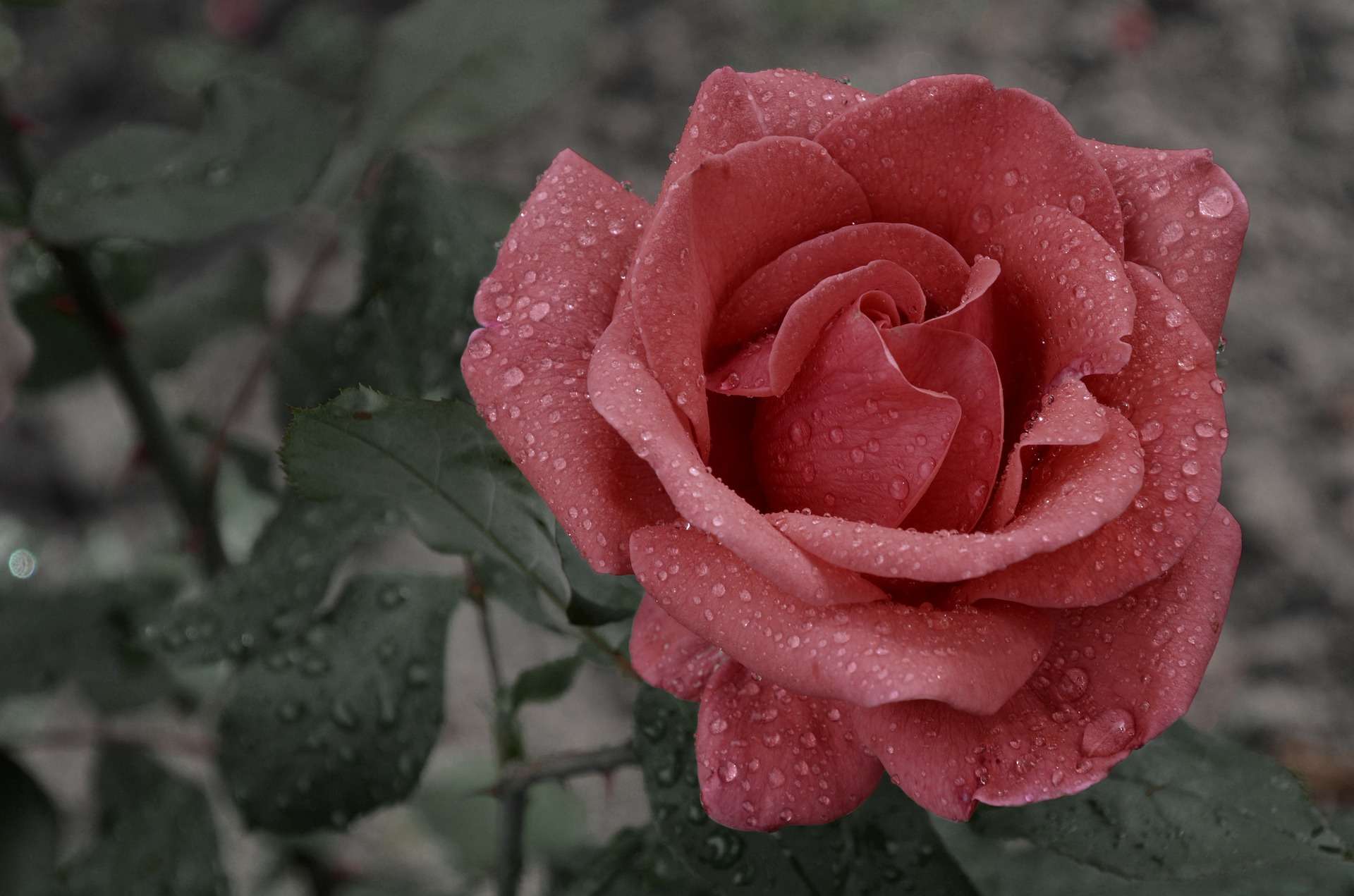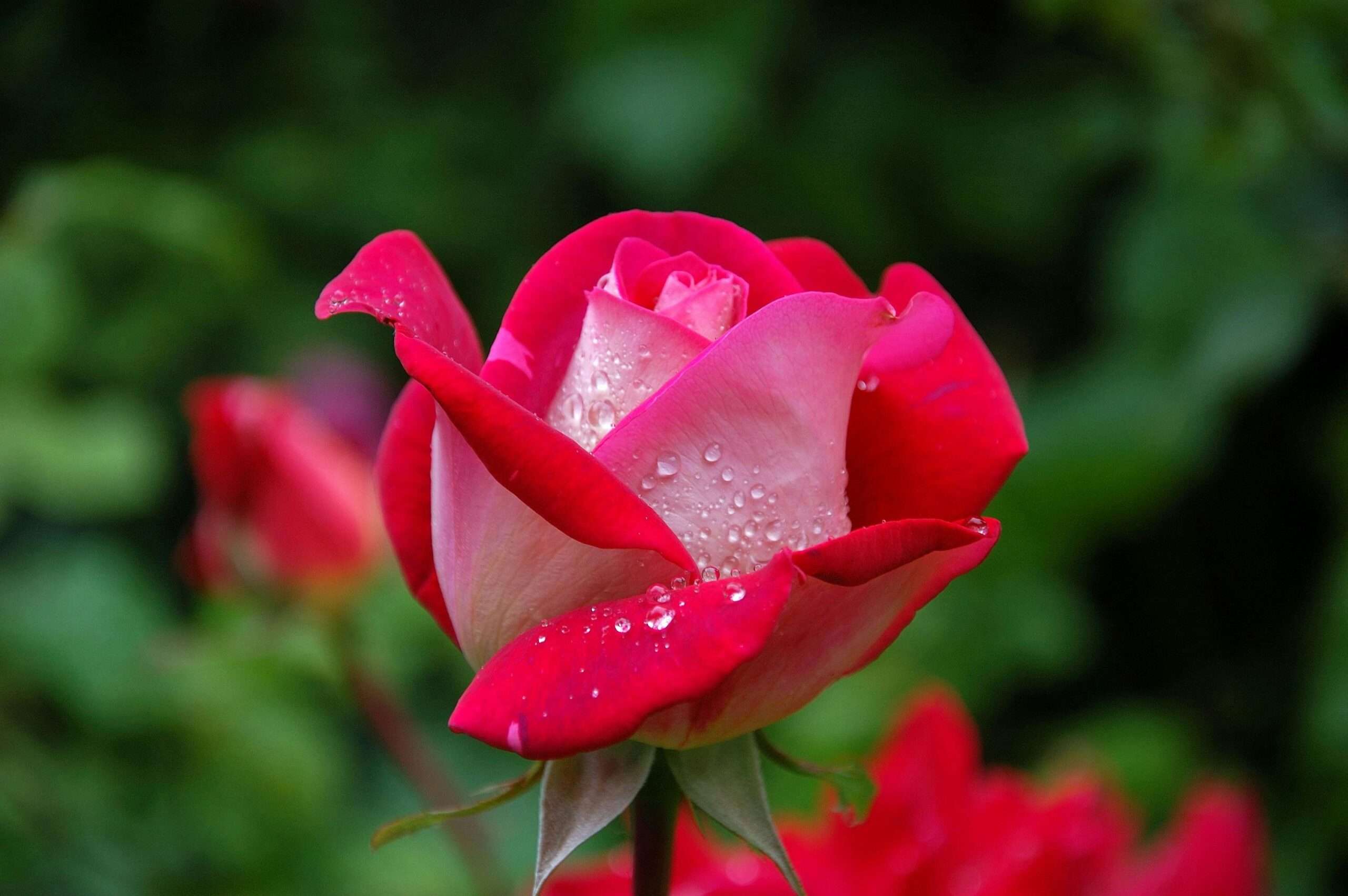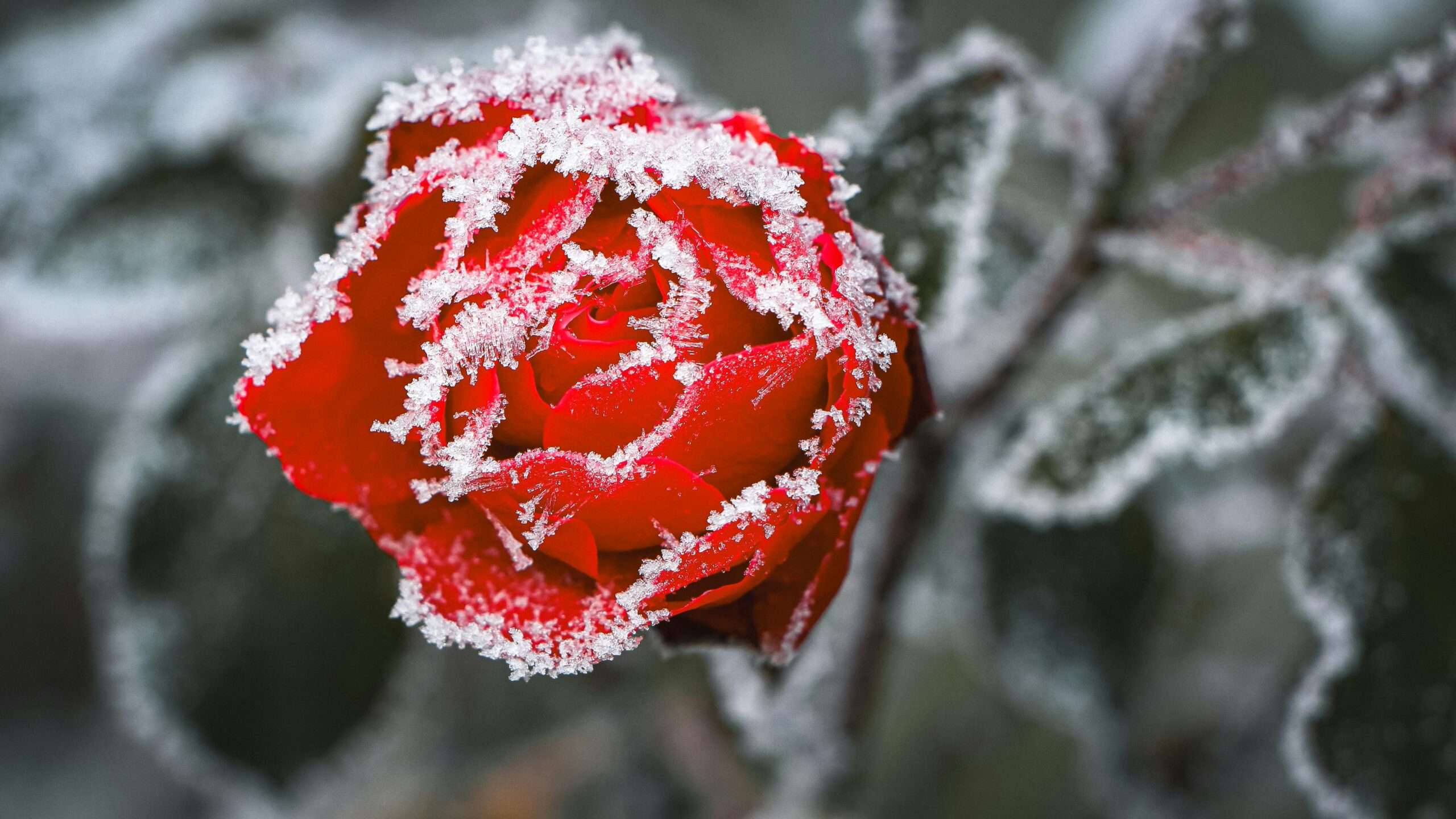Hey there, budding gardeners! Imagine sipping your morning coffee on the porch, surrounded by the sweet aroma of your own blooming roses in pots. This guide is your ticket to turning your tiny balcony or cozy patio into a floral paradise, even if you’re a greenhorn in gardening.
So, buckle up! We’re diving into everything you need to know about growing roses in pots. From picking the perfect pots to mastering the art of nurturing your plants, get ready to cultivate some serious flower power and learn how to grow roses in pots.
Table of Contents
1. Understanding the Basics of Growing Roses in Pots
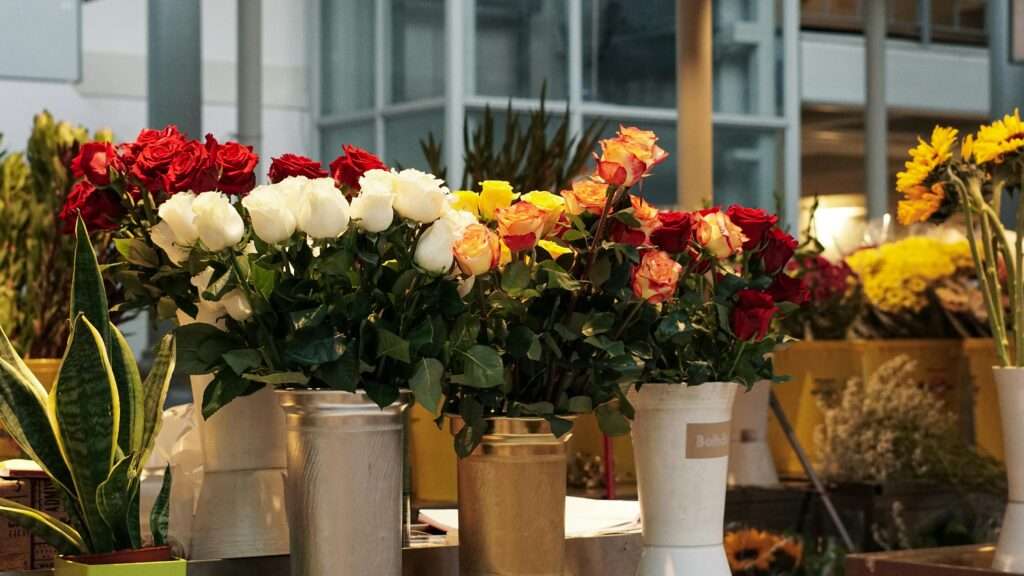
Choosing the Right Pot
Alright, let’s talk pots! Size matters, folks. Roses like their space, so think big – at least 15-20 inches in diameter. It’s like giving your plants their own VIP section.
Importance of Pot Size and Material:
Now, about materials – plastic, ceramic, terracotta… It’s like picking furniture for your roses. Plastic is lightweight and budget-friendly, but ceramic’s got that classy vibe, and terracotta? Well, it’s like the breathable yoga pants for your plants.
Recommendations for Optimal Pot Types:
Start with plastic if you’re new. As you gain experience, you can graduate to the fancier stuff. Who knows? Your roses might develop a taste for Italian terracotta!
Selecting the Ideal Rose Varieties
Choosing roses is like dating – you gotta find the right match. Miniatures for the small spaces, patio roses for the party animals, and ground cover roses for the ones who like to spread out.
Best Rose Varieties for Container Gardening:
These roses are like the superheroes of pots – compact, colorful, and ready to conquer your tiny garden world.
Factors to Consider When Choosing Rose Varieties:
Check the climate, size, and resistance to drama (ahem, diseases). You want roses that can handle the occasional weather tantrum and still bloom like nobody’s business.
2. Preparing the Pot for Planting
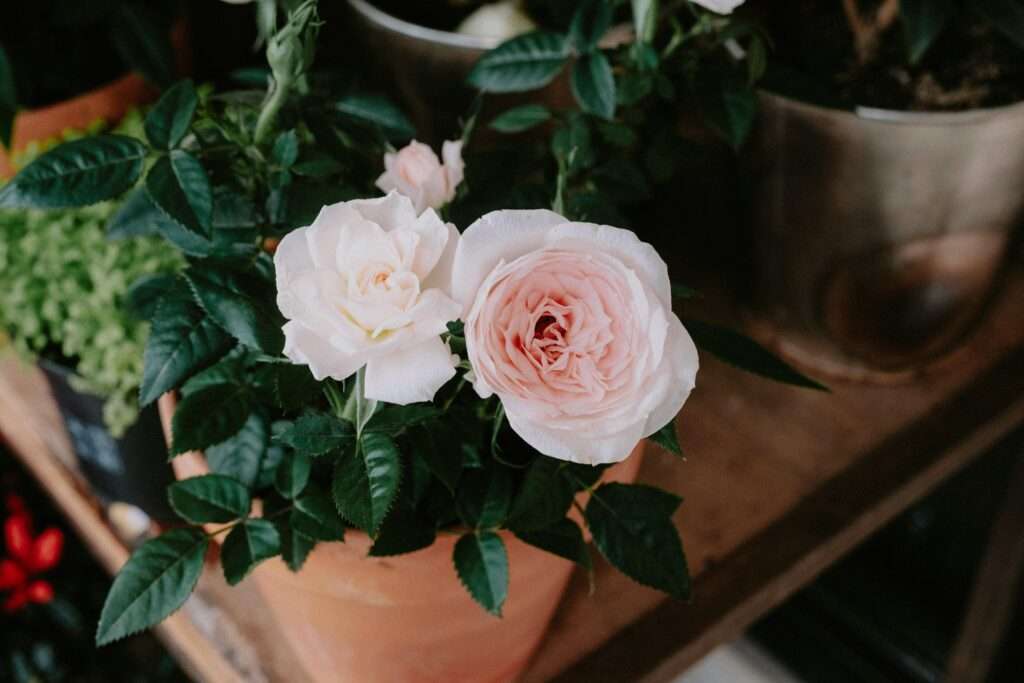
Soil Preparation: how to grow roses in pots
Alright, let’s get dirty! Roses love good soil – think of it as their spa day. Mix garden soil with compost and a touch of sand or perlite. It’s like a salad bar for plants – all the nutrients without the extra calories.
Ideal Soil Mix for Potted Roses:
Give your roses the good stuff. They deserve soil that drains well and keeps them feeling fresh and fabulous.
Tips for Enhancing Soil Quality:
Add compost like it’s confetti. Sprinkle some mulch on top for that cozy blanket effect. And don’t forget to check the pH – roses are picky about their pH levels!
Drainage Considerations
No soggy bottoms! Drainage is key – think of it as giving your roses their own drainage dance floor. They like to shake off excess water.
Importance of Proper Drainage:
Soggy roots? No bueno. Drainage holes and a layer of gravel are like rose insurance – protecting them from the dreaded root rot.
How to Ensure Adequate Drainage in Pots:
Elevate those pots, folks! Give them some air to breathe. It’s like yoga for plants – downward drainage.
3. Planting Roses in Pots
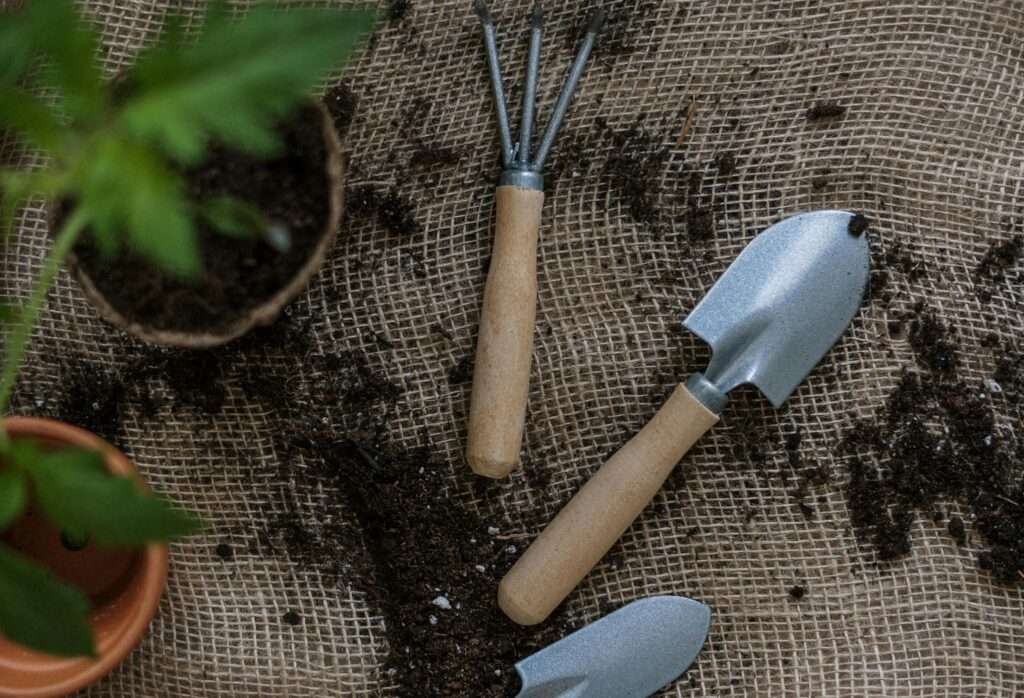
Planting Techniques
Time to get your hands dirty! Planting roses is like tucking them into bed – gentle and cozy. Don’t forget to fluff their pillows (the soil) and sing them a lullaby (water).
Step-by-Step Guide to Planting Roses in Pots:
Dig a hole, tuck in the rose, pat the soil – voila! You just planted a rose. They grow up so fast.
Common Mistakes to Avoid During Planting:
Don’t bury them too deep – roses hate being buried alive. And give them some space – no plant overcrowding!
Initial Watering and Care
New plant parents, listen up! Watering is like giving roses a drink – they like it cold, not too hot, just right.
Proper Watering Techniques for Newly Planted Roses:
Water deeply but not drowning deep. Think of it as a spa treatment – hydrate, don’t drown.
Tips for Initial Care and Maintenance:
Mulch is like the rose’s favorite blanket. Protect them from harsh weather and nosy neighbors (aka pests).
4. Essential Care Tips for Potted Roses
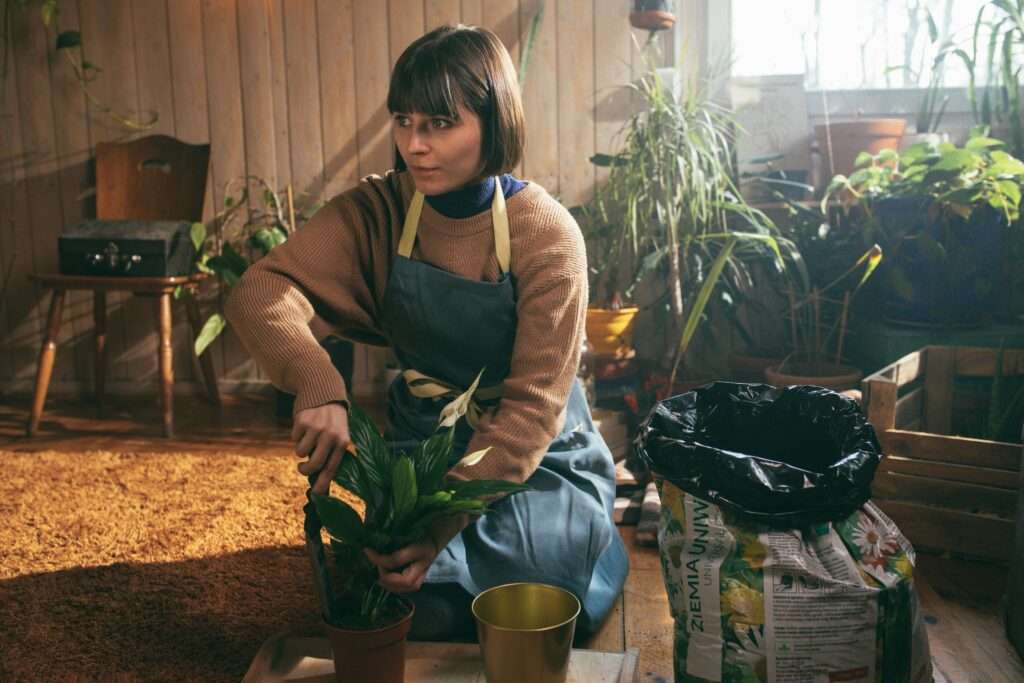
Watering Schedule and Methods
Watering is like playing Goldilocks – not too much, not too little, just right. Roses appreciate a consistent routine – it’s like their morning coffee.
Best Times to Water Potted Roses:
Early morning – roses are not morning people, but they appreciate a wake-up call.
Frequency of Watering and Methods:
Drip irrigation is like a spa day for roses – luxurious and efficient. Hand watering? More like a personalized massage.
Fertilizing Potted Roses
Feed those roses! Fertilizer is like their vitamins – keep them strong and blooming.
Types of Fertilizers Suitable for Potted Roses:
Organic or synthetic – it’s like choosing between organic kale or a protein shake. Both are good, depending on your roses’ diet plan.
How and When to Fertilize for Optimal Growth:
Spring is like their birthday – fertilize to celebrate! Follow the label instructions – roses can be picky eaters.
5. Managing Pests and Diseases

Pests and diseases? It’s like having unwanted guests at the garden party – time to show them the door.
Common Pests Affecting Potted Roses
Aphids, spider mites – these critters are like the party crashers of the plant world. But have no worries, we possess cunning strategies at our disposal.
Identification of Common Pests:
Spot the bugs, call them out – it’s like being the detective of your garden.
Natural and Chemical Methods for Pest Control:
Neem oil? It’s like rose perfume for bugs – they hate it. Chemicals? Only as a last resort – it’s like bringing in the big guns.
Preventing and Treating Diseases
Diseases are like gossip – spread quickly and ruin the party. Prevention is key.
Signs of Common Rose Diseases:
Black spots? Powdery mildew? It’s like the rose’s worst nightmare. Catch it early, treat it well.
Effective Prevention and Treatment Strategies:
Good air circulation, dry leaves – it’s like keeping your roses happy and healthy.
6. Pruning and Deadheading Potted Roses

Time to trim the hedges! Pruning is like giving roses a haircut – shaping them up for the season.
Pruning Techniques
Snip here, snip there – pruning is like an arts and crafts project. Shape those bushes into botanical bonsais.
Importance of Pruning for Rose Health:
Cut the dead weight, shape them up – it’s like sending roses to the gym.
Step-by-Step Pruning Guide:
Sharp scissors, steady hand – prune like a pro. Remove the dead, shape the new.
Deadheading for Continuous Blooms
Deadheading? It’s like tidying up after a party – clean up the mess, make room for new guests.
Benefits of Deadheading:
More blooms, less gloom – it’s like giving roses a makeover.
How to Deadhead Roses Properly:
Snip snip, just above the leaves – roses love a good haircut.
7. Seasonal Care and Maintenance

Roses have seasons too! Like a relationship, it’s all about adjusting and adapting.
Preparing for Different Seasons
Spring, summer, fall, winter – roses change with the seasons. Like a wardrobe, adjust their care accordingly.
Seasonal Changes and Their Impact on Potted Roses:
Summer sun, winter frost – protect your roses like they’re delicate divas.
Tips for Adjusting Care Throughout the Year:
Monitor, adjust – it’s like a dance with Mother Nature. Stay flexible, keep those roses happy.
Winter Protection for Potted Roses
Winter is coming – time to bundle up those roses! Protect them like they’re your fragile treasures.
How to Protect Roses from Winter Frost:
Cover them up, keep them warm – roses hate cold feet.
Best Practices for Winterizing Potted Roses:
Water, mulch, cover – it’s like giving them a cozy blanket for the winter.
Conclusion
Congratulations, you’re now a rose whisperer! Growing roses in pots is like magic – patience, care, and a touch of humor. Enjoy the journey, smell the roses, and remember, gardening is like life – it’s all about the love you plant.
Learn more about how to grow roses in pots
So, what are you waiting for? Start your rose adventure today and let’s bloom together! Happy planting, green thumbs!
Can any type of rose be grown in pots?
Absolutely! While some roses are better suited for container gardening than others, many varieties thrive in pots. Miniature roses, patio roses, and certain hybrid tea roses are excellent choices for their compact size and adaptability to confined spaces. Just ensure you choose a variety that matches your climate and pot size to maximize success.
How often should I water roses in pots?
Watering frequency depends on several factors such as weather conditions, pot size, and soil type. As a general rule, water potted roses deeply when the top inch of soil feels dry. In hot weather, this may mean watering daily, while in cooler periods, you can reduce watering frequency. Always check the soil moisture before watering to avoid over or underwatering.
Do roses in pots need fertilizer?
Yes, fertilizing potted roses is essential for their health and blooming. Use a balanced fertilizer formulated for roses, and apply it according to package instructions. Start fertilizing in early spring as new growth begins and continue throughout the growing season. Organic options like compost or slow-release granules are great choices for sustained nutrition without risking burn.
How do I protect potted roses in winter?
Winter care is crucial to protect potted roses from frost damage. Before the first frost, water your roses thoroughly and apply a layer of mulch around the base to insulate the roots. Consider wrapping the pots with burlap or placing them in a sheltered location, like a garage or shed, to shield them from harsh winter winds. Monitor soil moisture during winter months, as pots can dry out faster in cold weather.
What are common pests and diseases that affect potted roses?
Potted roses can face challenges like aphids, spider mites, black spot, and powdery mildew. Regularly inspect your plants for signs of pests or diseases, such as distorted leaves or fungal growth. For pest control, try natural remedies like neem oil or insecticidal soap before resorting to chemical treatments. Preventative measures such as good air circulation and proper watering practices can also help mitigate these issues.

